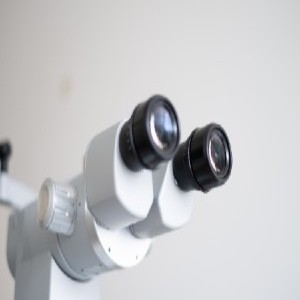At Adelaide Eye and Retina Centre, we are actively involved in clinical research to help better patient outcomes and offer opportunities for patients to access novel therapeutics. Some of these therapies may be novel doses of currently available medications, new medications such as gene therapy and new medication delivery systems such as drops instead of injections.
If patients/participants are enrolled in studies their care is undertaken without cost and transport is often provided to and from visits. However the studies have very strict inclusion and exclusion criteria and so some patients/participants will not be eligible.
Some studies are observational, and others are interventional. We are currently recruiting for a number of studies which involve patients with intermediate AMD, nascent geographic atrophy, geographic atrophy, neovascular age-related macular degeneration, all forms of retinal vein occlusion (BRVO, CRVO and HRVO) and centre-involving diabetes-related macular oedema.
HONU
Observational study of the progression of intermediate AMD (no drug therapy)
- 3-year observational study
- 12 weekly visits
Study eye:
- BCVA ≥ 72 letters (20/40 or better)
- High-risk intermediate AMD with more than 1 large drusen ≥125µm and AMD pigmentary abnormalities
- No evidence of nGA, cRORA, or GA secondary to AMD
- No evidence of prior or active exudative MNV
Fellow eye:
- Presence of at least one of the following: nGA, iRORA, cRORA (on SD-OCT), GA secondary to AMD on CFP, orFAF
- NO evidence of prior or active exudative MNV
- Macula disease in either eye with subretinal deposits not typical of AMD (e.g Malattia Leventinese, Sorsby fundus dystrophy, Alport syndrome and choroidal naevus)
- Presence of nGA, cRORA, or GA
- Intraocular surgery, including cataract surgery OR retinal tears or peripheral retinal breaks within 3 months prior to Day 1
- Prior treatment with PDT, external beam radiation therapy (for intraocular conditions), or transpupillary thermotherapy
- History of glaucoma filtering surgery, corneal transplants, RPE tear, retinal tear that involves the macula, retinal detachment.
INSITE
T&E vs Fixed dosing with Faricimab for patient with DME
- 2 year study
- Fixed dosing = monthly visits
- T&E = 3 x 4 weekly loading doses then T&E regime depending on response
- Diagnosis of Type 1 or 2 diabetes
- BCVA letter score between 80-20 letters (20/25 – 20/400)
- CI-DME involving centre of the fovea on OCT (CST ≥325µm on Heidelberg at Screening)
-
- High-risk PDR in the study eye
- Previous treatment with anti-VEGF and:
- <12 weeks prior to day 1 (washout period). * or
- Diagnosis of DME is >2 years of enrolment or,
- Do not have a demonstrated response to anti-VEGF treatment based on clinical discretion
- Uncontrolled glaucoma (IOP >30 with or without medications)
- Treatment with PRP within 12 weeks of Randomization
- Treatment with macula laser
- Any intravitreal, periocular or implant corticosteroids within 6 months before Randomization
** Patients who have previously been treated with anti-VEGF will be eligible for enrolment. A wash-out period of 12 weeks prior to the day 1 visit will be required for previously treated patients. Previously treated study eyes will be limited to 25% of the total enrolment. Previously treated participants must have been diagnosed with DME within the past 2 years of enrolment and have demonstrated response to anti-VEGF treatment based on clinical discretion.
Assessing the Efficacy and Durability of Faricimab in patients currently treated for wet AMD
- 1 year study
- Monthly visits until week 12 then treat & extend depending on response
- BCVA > 20 letters (6/120)
- Previously treated neovascular AMD, diagnosed within 36 months:
- Subjects must have had at least 3 consecutive monthly injections of Lucentis or Eylea with a demonstrated early treatment response. An early treatment response is defined by:
- Any reduction in retinal exudation (IRF and/or SRF) within the first 4 months of anti-VEGF treatment
- Previous treatment with Lucentis or Eylea following a treat-and-extend principle
- First anti-VEGF injection within 36 months at screening
- Most recent injection between 1-3 months at screening
- Subjects must have had at least 3 consecutive monthly injections of Lucentis or Eylea with a demonstrated early treatment response. An early treatment response is defined by:
- Active CNV lesions, secondary to AMD affecting the central subfield at screening
- Active CNV is considered to be evidence of IRT and/or SRF affecting the central 3mm subfield of the study eye, confirmed on SD-OCT.
- Availability of historical SD-OCT imaging to demonstrate treatment response
- Availability of comprehensive historical anti-VEGF injection data including anti-VEFG agent administered, total number and date of administration from the first treatment for wet AMD.
- CNV due to causes other than wet AMD
- Central subfield of study eye is affected by fibrosis or GA
- History or evidence of the following in the study eye:
- Vitrectomy
- Previous treatment with ani-VEGF other than Lucentis or Eylea
- Previous PDT
- Previous PRP
- Stroke or MI within the 90 day period prior to Baseline
TRIALS ARE OPEN FOR RECRUITMENT
Phase 3 study to explore safety and efficacy of oral Tinlarebant in patients with GA
- 2 year study
- 11 study visits: screening/baseline, months 3, 6, 9, 12, 15, 18, 21 and 24
- Males or females, 60 to 85 years of age
- Subjects must have a confirmed diagnosis of GA with atrophic lesions (diagnosed as GA) in 1 or both eyes, measuring 1 to 10 mm2 in aggregate area as assessed by FAF photography; areas of foveal involvement should be ≤ 1.25 mm2; if GA is multifocal, at least 1 focal lesion must be ≥ 1.25 mm2
- Any GA lesions larger than 10 mm2 in the study eye
- Any foveal-involved GA lesions larger than 1.25 mm2 in the study eye
- The presence of diabetic macular edema or macular disease in either eye
- Diabetic retinopathy more advanced than mild no proliferative diabetic retinopathy, or any other retinal vascular disease in either eye.
- Presence or history of choroidal neovascularization in the study eye or fellow eye
- Any form of diagnosed glaucoma in the study eye, intraocular pressure > 25 mm Hg, glaucomatous visual field, or disc cupping considered clinically significant (CS) for advanced glaucoma (cup-to-disc ratio > 0.6), in the study eye
Sham-controlled Clinical Trial to Evaluate Intravitreal JNJ-81201887 (AAVCAGsCD59) Compared to Sham for the Treatment of GA (gene therapy trial – single injection)
- 18-month study
- 13 study visits
- BCVA letter score of 24 or better (20/320) at Screening and Baseline
- Non-subfoveal GA (defined as not involving the centre point of the fovea) secondary to AMD with an area measuring 2.5mm² to 17.5mm² on OCT and FAF
- If GA is multifocal, at least one focal lesion must be ≥1.25mm²
- History or presence of retinal disease other than GA: DR, CSR, arterial and venous occlusive disease, macula hole (present or previously repaired) or choroidal melanoma
- Presence of macular fibrosis or retinal epithelial tear, myopic degeneration, or vitreous haemorrhage
- Previous PDT or thermal laser in the macula region
- History of RD, vitrectomy, corneal transplant, trabeculectomy, or tube shunt surgery
- Uncontrolled glaucoma (IOP >22 despite treatment with more than 2 anti-glaucoma medications)
- Previous ivi drug therapy or implant (except for perioperative corticosteroid during cataract surgery at least 6 months prior to enrolment)
- Previous participation in an ocular interventional trial for AMD (except vitamins or minerals)
Subthreshold laser treatment in intermediate AMD with nascent GA
Phase 2 study to assess safety and efficacy of KHK4951 (eye drops) in patients with wet AMD
Phase 2 study to assess safety and efficacy of KHK4951 (eye drops) in patients with DME
Fax
For urgent referrals:
(08) 8212 3302
Please email us for less urgent contact:
admin@adelaideeye.com.au
Adelaide Eye and Retina Centre
18 North Terrace, Adelaide.
We are located on the second floor.
18 North Terrace, Adelaide
Marion Eye and Retina Centre
530 Marion Road, Plympton Park.




